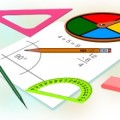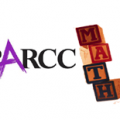
With over half of the school year completed, many school districts are turning their attention to their state’s upcoming standardized tests. For states that are part of the Smarter Balanced consortia, their students will be taking a computer adapted test to measure their progress.
Today, we will share several sample questions for grades 3-5 that have been released from www.smarterbalanced.org to give you an idea of questions that your students are likely to see on the test. After each sample question, an explanation follows that includes any important aspects of the task that you may need to consider with respect to the skills, processes, and information your students need to know.
(Note: The sample questions for the 3rd-5th grade band are designed for 4th graders.)
Question #1:
After reading a short text (Grandma Ruth), students are asked:
What does Naomi learn about Grandma Ruth? Use details from the text to support your answer.
Type your answer in the space provided.
Explanation: This question asks the reader to synthesize what he or she just read and then determine the central idea of the passage; moreover, the student is asked to cite evidence to support that answer.
Question #2:
Students are directed to a paragraph in the story, and then they are asked:
Click on two phrases from the paragraph that help you understand the meaning of scarred.
Explanation: Here, students must revisit the text for clues that helped them determine the meaning of the word “scarred” within the context of the passage.
Question #3:
Students are given an excerpt from the text and asked to:
Select three sentences that show that Naomi is worried she has done something wrong.
Explanation: Once again, students are asked to go back into the text to support the inference that the character’s emotional state is one of worry.
Question #4 (Writing):
The following is the beginning of a story that a student is writing for a class assignment. The story needs more details and an ending. Read the beginning of the story and then complete the task that follows.
Oliver’s Big Splash
Oliver was a dog that lived in a small town near a lake. He loved to play outside. Oliver liked to play fetch, but his favorite thing to do was to chase leaves. He loved chasing leaves so much that his favorite time of year was fall when the leaves fell off the trees.
One beautiful fall day, Oliver and his owner, Jeff, went for a walk around the lake. They were enjoying the sunshine and the lake when suddenly a dragonfly flew past. For a moment, Oliver forgot where he and Jeff were and what they were doing. All of a sudden, there was a big splash.
Write an ending to the story by adding details to tell what happens next.
Explanation: This question requires the student to employ what he or she knows about narrative writing to continue the story with appropriate “narrative strategies (use of dialogue, sensory or concrete details, description), chronology, appropriate transitional strategies for coherence, or authors’ craft appropriate to purpose (closure, detailing characters, plot, setting, or an event)” (from sampleitems.smarterbalanced.org).
Question #5 (Writing)
The following is a rough draft of a paragraph that a student is writing for the school newspaper about why there should be a longer school day. The draft needs more details to support the student’s reasons for having a longer school day.
Why There Should Be a Longer School Day
Schools should have a longer school day for students. First, students could learn more about different subjects if the school day were longer. Also, students could get extra help from teachers. More hours in class each day would also mean more vacations scattered throughout the year!
Now look at the following daily schedule for a school that has switched to a longer school day.
08:00 Morning Announcements
08:20 Reading Language Arts
09:30 Foreign Language
10:30 Morning Recess
10:45 Mathematics
11:45 Lunch
12:45 History
01:45 Art or Music
02:15 Afternoon Recess
02:45 Science
03:30 Homework Preparation
03:45 After-School Tutoring or Sports
Revise the paragraph by adding details from the daily schedule that help support the reasons for having a longer school day.
Explanation: For this writing assignment, the student must present a compelling, logical argument based on the student’s ability to synthesize the given information and create a coherent writing piece with the intention of persuading the reader.
Question #6:
Why does the video compare being in space to lying in bed?
to tell how an astronaut needs sleep
to describe how, an astronaut floats in space
to explain that an astronaut’s work is very difficult
to show how an astronaut’s body lacks gravity to help it work
Explanation: Not only does this question require students to be familiar with viewing the video before answering questions, but the question itself also demands that the test-taker can interpret the information provided in a meaningful way.
Now What?
In these sample questions, there is one theme that continues to emerge: students must know how to cite evidence and to revisit the text numerous times to answer questions, prepare written responses, and identify context clues and details that support an answer, claim or position.
Here are three simple ways to ensure that you are preparing your students for these types of tasks:
• One excellent way to build those skills daily is through Close Reading practice sessions, as Close Reading requires that the student interact with and revisit a text multiple times for deeper understanding. For more details regarding Close Reading, check out How to Help Students With Increasingly Complex Text and Smarter Balanced Practice Resources for further details and ideas.
• As mentioned in Socratic Seminar and You…Perfect Together, this instructional strategy is a wonderful way to get students to work on their speaking and listening skills, along with citing text to support their ideas.
• Finally, any type of writing that you do that asks students to provide textual support – from open-ended essay questions to argument writing – will help students feel comfortable and prepared for these types of questions.
Next week, we will look at the sample questions for grades 6-8 in ELA, and in future articles we will share the math sample questions with you as well.






Pingback: SAMPLE SMARTER BALANCED QUESTIONS: MATH, GRADES 3-5
Pingback: Smarter Balanced Sample Questions: Math, Grades 3-5 – by Julie C. Lyons | Lumos Learning